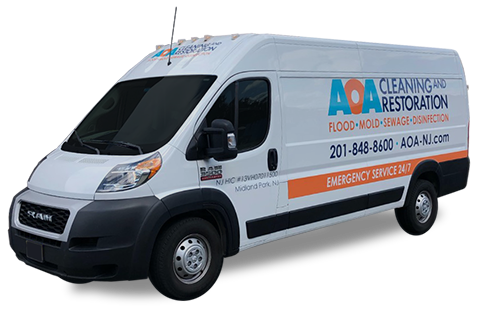When a leak is found, many wonder if fixing it will get rid of the mold. But, mold removal isn’t that simple. It’s not just about stopping the moisture.
Mold spores can stay hidden, waiting for the right time to grow again. So, even after fixing the leak, mold might stay. It can be harmful and cause more damage if not handled right.
Key Takeaways
- Mold doesn’t automatically disappear once the leak is fixed.
- Proper mold removal is necessary to prevent regrowth.
- Dormant mold spores can reactivate under favorable conditions.
- Addressing mold issues promptly is critical for health and safety.
- Professional mold remediation may be needed for serious cases.
Understanding Mold Growth After Water Leaks
Water damage can quickly lead to mold growth if not addressed promptly. When a leak occurs, the immediate concern is usually fixing the source of the water intrusion. But, the aftermath of a leak is just as critical. Moisture can linger and create an ideal environment for mold to thrive.
The Role of Moisture in Mold Development
Moisture is a key factor in mold growth. When water damage occurs, mold colonies can start forming in 24 to 48 hours. This rapid growth is due to moisture, which can come from roof leaks, plumbing issues, and flooding. The key to preventing mold growth is to address the moisture issue promptly through effective water damage restoration.
Common Sources of Household Leaks
Household leaks can come from several common sources. Knowing these sources is key to preventing water damage and mold growth.
- Roof leaks due to damaged or missing shingles
- Plumbing issues, such as burst pipes or leaky faucets
- Appliance malfunctions, like a faulty washing machine or dishwasher
Identifying and addressing these leak sources is critical in preventing water damage and mold growth. Regular inspections and maintenance can help mitigate these risks.
By understanding the relationship between moisture and mold, homeowners can take proactive steps to prevent mold growth after a water leak. This includes ensuring thorough mold remediation processes are in place when dealing with water damage.
Will Mold Go Away Once Leak Is Fixed?
Mold doesn’t just disappear when a leak is fixed. It needs moisture to grow, and fixing the leak removes that moisture. But it doesn’t get rid of mold that’s already there.
Why Mold Doesn’t Disappear on Its Own
Mold spores are tough and can stay dormant. They wait for the right conditions to grow again. Professional mold removal is often needed to get rid of mold completely.
Dormant vs. Active Mold Growth
Mold can seem to disappear after a leak is fixed, but it can come back if moisture returns. It’s important to know the difference between dormant and active mold growth for effective cleaning.
Health Risks of Leaving Mold Untreated
Untreated mold can cause serious health problems, like breathing issues and allergies. Moisture control is key to stopping mold and avoiding these health risks.
People with health issues are more at risk from mold. Quick action, including professional help, is vital to protect health.
Effective Mold Remediation and Prevention
Mold remediation and prevention are key to a healthy home after a leak. You need a mix of professional mold removal, DIY for small spots, and steps to stop mold from coming back.
Professional Mold Removal Process
For big mold problems, getting a pro is best. These experts do detailed mold inspections to find all mold spots.
They then seal off the mold to stop it from spreading. They remove or clean the moldy stuff.
- Identify and contain the mold
- Remove or clean mold-infested materials
- Ensure thorough drying and cleaning
DIY Mold Removal for Small Areas
For small mold spots, under 10 square feet, you can try DIY. Always wear protective gear like gloves, a mask, and goggles.
Clean the mold with a water and detergent mix. Then, dry it well.
- Wear protective gear
- Clean the area with a detergent solution
- Dry the area thoroughly
Preventing Future Mold Growth After Fixing Leaks
To stop mold from coming back, fix moisture issues first. This means fixing leaks fast and keeping damp areas well-ventilated.
Check for moisture and mold often. Use a dehumidifier in humid places or where dampness is common.
- Fix leaks promptly
- Improve ventilation in damp areas
- Use a dehumidifier if necessary
Conclusion
Stopping mold growth needs a full plan. This includes acting fast, fixing the problem well, and keeping up with maintenance. After fixing a leak, it’s key to clean the affected area well to stop mold from coming back.
Good mold removal means finding and fixing the moisture problem. It also means removing damaged stuff and cleaning everything well. This helps keep your home safe and healthy.
Keeping up with maintenance is also very important. Look for water damage signs often, make sure air moves well, and fix leaks quickly. Being careful and acting early helps keep your home safe from mold.
FAQ
Will mold go away once the leak is fixed?
No, fixing a leak alone won’t get rid of mold. Mold spores can stay dormant and grow back when conditions are right. So, it’s important to remove mold properly.
What contributes to mold growth after water leaks?
Moisture is key for mold growth after leaks. Leaks from pipes and roofs can cause water damage. This creates a perfect spot for mold to thrive.
Why is water damage restoration important in preventing mold growth?
Water damage restoration stops mold by finding and fixing hidden moisture. It’s vital to check for moisture sources to prevent mold.
What are the health risks of not treating mold?
Untreated mold can harm health, more so for those with health issues. It can worsen breathing problems and other health issues. Quick action is key to avoid these risks.
How can I stop mold from coming back after fixing leaks?
To stop mold, fix leaks fast, control moisture, and dry and clean well. Regular checks and care can also help prevent mold.
What safety steps should I take when removing mold?
When removing mold, wear gloves and masks, and make sure there’s good air flow. This helps avoid mold spore exposure.
Can I remove mold myself, or should I get professional help?
For small mold spots, DIY removal works. But for big areas or severe mold, get professional help. They ensure safe and complete removal.
How can I control moisture to stop mold growth?
To control moisture, fix leaks, improve air flow, and use dehumidifiers. This keeps the area dry, making it hard for mold to grow.






